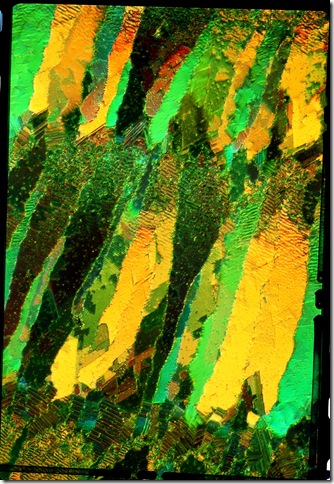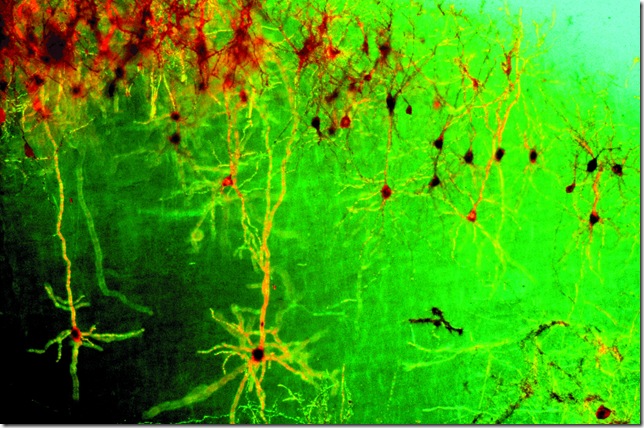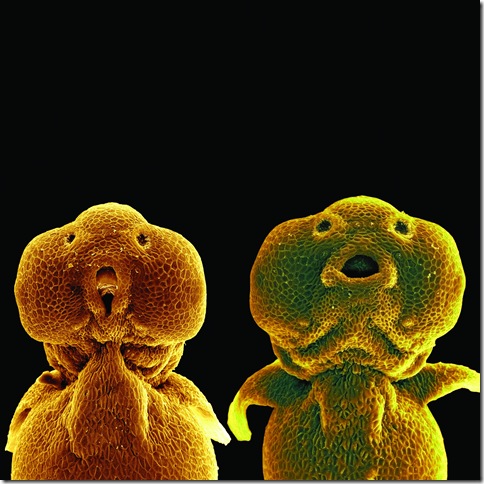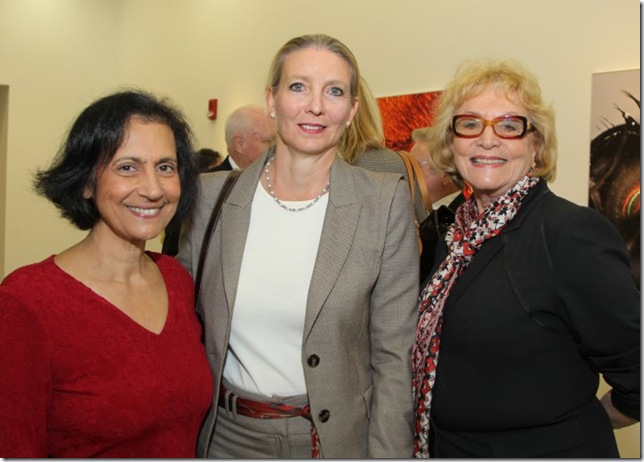By Tom Tracy
Walking into the main gallery of the Palm Beach Photographic Centre this month might best be described as a large-scale Rorschach test designed to reveal something about your own Freudian mindscape.
That’s because through the end of the year the Photographic Center on Clemetis Street is hosting Images of Science, an exhibit of 40 photos from scientific research done by Max Planck-affiliated researchers.
The images are presented as large 40×40-inch prints of colorful and exotic shapes and forms created through macro and microscopic photography and other imaging technologies in the worlds of science and industry.
Every year, Germany’s Max Planck Society asks scientists from their 80 institutes and research facilities to provide images of their research that are then juried by a panel of architects, photographers and journalists.
Winning photos are included in the exhibition that has traveled to museums and embassies in Germany, Austria and Thailand. Thus far there have been three rounds of the competition as the show makes it way around the globe.
“There is one photo that looks like Martians to me; I think it was actually a picture of blood cells,” said Fatime NeJame, executive director of the Photographic Centre, which collaborated with the Jupiter-based Max Planck Florida Foundation to present the free exhibit through Dec. 30.
Images of Science represents a first for the Photographic Centre in terms of science and biological research photography and should strike a chord with the Centre’s community supporters and students, many of whom specialize in nature photography and abstract photography based the natural world.
“When you look at these images and realize how important compositions is for photographers — the attention to detail and placement of the subject and lighting is great; you end up with these amazing images that have a lot of impact,” NeJame said.
High-powered microscopic photography reveals a hidden universe when the lens is turned on leaf hairs, nerve cells in mammals, tiny silicon nanowires on a wafer of gold, or a beetle’s feet, And a computer-generated image of a planetary nebula reconstructed from conventional photography.
The spectrum of technologies used is broad. It includes conventional photography, color-added microscopy — light microscopy, electron microscopy, low-temperature scanning tunneling microscopy, confocal laser scanning microscopy — and computer simulations, according to organizers.
The Photographic Centre has invited select groups of local school children and others interested in science and medicine to come tour the exhibition this month, according to NeJame.
“I have four or five favorites. There is one that is multicolored and it looks like buoys in the water, beautifully composed,” she said. “Another looks like a landscape and it reminds me of a mountain range in Turkey. In probably about You look at the different 30 percent of them I can identify them with something else: flowers or things.”
The images not only “make the invisible visible,” but they put a face on scientific processes that have an enormous impact on all our lives, according to Claudia Hillinger, president of the Max Planck Florida Foundation.
As an example, Hillinger points to one of the images in the exhibit, which captures how a particular type of white blood cells, neutrophils, act almost as “linebackers” in our immune system. The cells literally devour harmful bacteria and can also cast out fibrous structures like nets to catch bacteria  and kill them outside of the cell.
and kill them outside of the cell.
“This image actually shows a shigella bacteria caught in the net of neutrophils. It’s an amazing thing to be able to see our own bodies working to protect us on a cellular level,” she said.
Hillinger has been honored at a local Women Pioneers in Florida Business event and is based at Max Planck’s first scientific research facility in the United States — the 100,000-square-foot Max Planck Florida Institute on the MacArthur campus of Florida Atlantic University in Jupiter.
The Foundation is the philanthropic arm of the Max Planck research institute, and its mission, including the photo exhibition, is to create awareness of the company’s work, research and its application.
“By doing so, we hope to find a strong network of supporters that will help us continue to carry on this work that might revolutionize our understanding of the brain, how neural networks form, and how we can address neurological and psychiatric disorders and diseases,” Hillinger said.
One of her own favorites is a photograph showing the crystallization processes in liquid films, but the image resembles perhaps a painting by Vincent van Gogh. Another, titled Starry Night, was made with an electron microscope and shows salt droplets embedded in a gelatinous structure.
“They invite us to look at the world with different eyes and in new ways, and in doing so broaden our perception, Hillinger said. “Then the spectator transcends the boundary between science and art. And that is exactly what we hope to achieve.”
Images of Science, through Dec. 30 at the Palm Beach Photographic Centre, 415 S. Clematis St., West Palm Beach. Ehibition hours are 10 a.m. to 6 p.m. Monday through Thursday; 10 a.m. to 5 p.m. Friday and Saturday. Admission is free. Call 253-2600 or visit www.fotofusion.org for more information.


